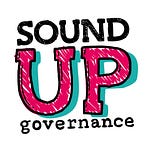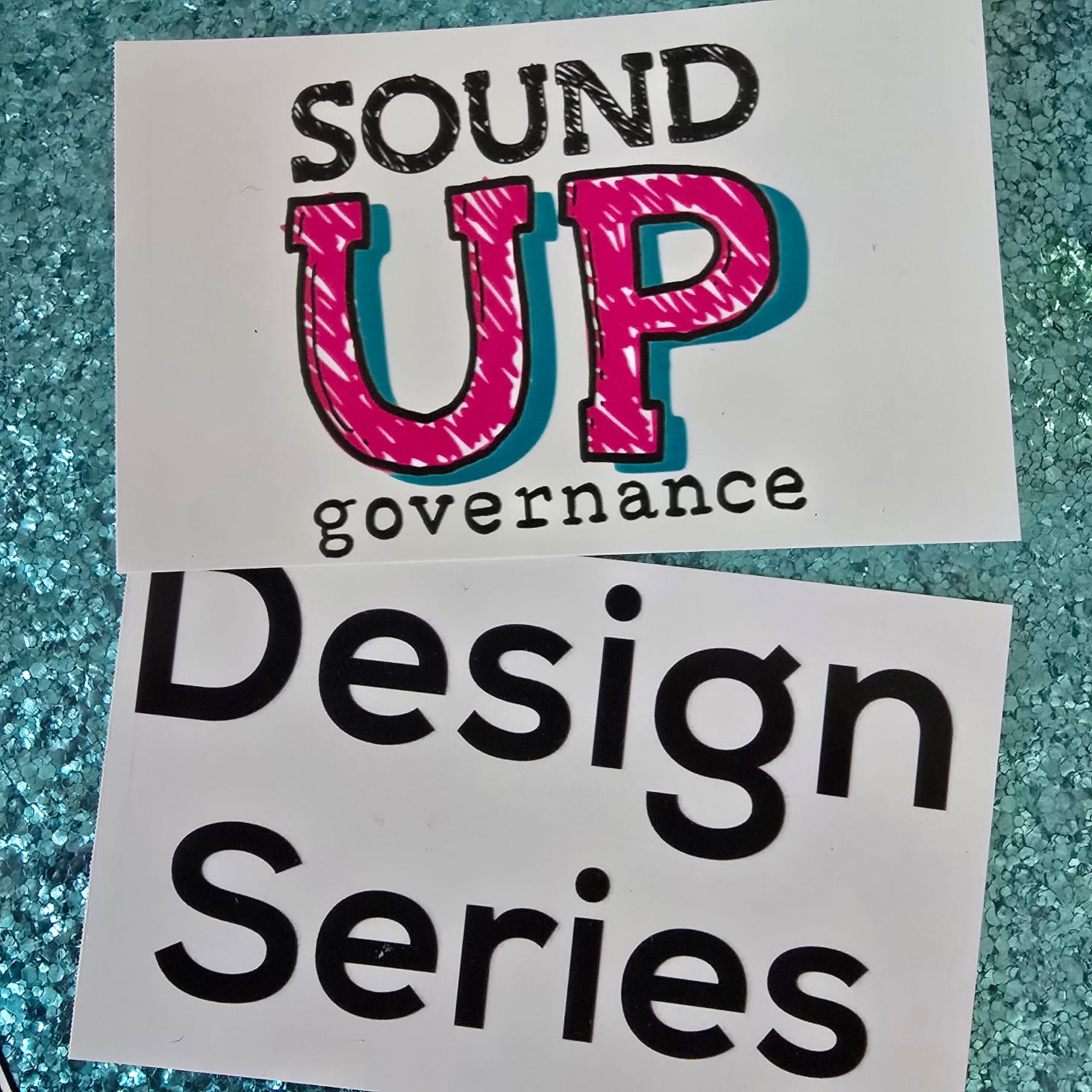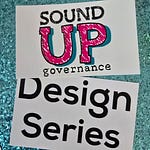TRANSCRIPT
Matt Voiceover
Welcome back to Sound-Up Governance. My name is Matt Fullbrook and this is the second episode in a short series of highlights from a webinar that I co hosted a few months ago with my friend Michael Hartmann. He's the Principal of the Directors College at McMaster University, and he invited his friends Karel Vredenburg, who up until recently was the Global VP of UX Research, IBM, and Tara Safaie, who's the Executive Director of Health and Organizational Innovation at the design firm IDEO. All three of Michael, Tara and Karel are experts in human-centered design, which I am decidedly not. Still, I see a clear and important connection between good governance and design. And that connection is what today's conversation is about. Let's get started.
Matt
So I did just the other day I looked on Amazon and just to see how many book results you get when you search for Beyonce and the number was I think 333. And the number of book results that you get when searching for corporate governance is 10,000. So by one totally unscientific metric, corporate governance is way bigger than Beyonce. I haven't read all those 10,000 books, but I have been over the past few years very obsessed with the like trying to figure out if or where there might be a consensus about what governance is... and there isn't. There's no agreement. There's a million definitions. Most of them aren't helpful, aren't action oriented, don't make a lot of sense. And so to me, when I talk about governance, I talk about it's the decision making part. So that just for clarity, that's what I mean. When I talk about governance, I'm talking about decisions. And when I'm thinking about boards and managers and the way they work together, I reflect on my 20 plus years in the space and realize that all of the complaints that I heard 20 something years ago are the same as the ones I hear now. Right? So the interventions that we've tried have not solved the we're stuck in the weeds or there's people in the room who talk too much or there's people in the room who don't talk enough. We have, we've got information asymmetry problems and time problems and so on. I think now that I'm learning more about design and this is where my question is, I think part of the way that design can be applied in a useful way in boardrooms, I haven't seen yet. I see design experts come into boards and say "let's become human-centered, but we're going to obsess over the customer." And I'm thinking, well, okay, in a, in a sense, the friction here is between board and management because they're creating work product for each other. Not even though the, the ultimate beneficiary of the work is the customer. They've got their own consumer here. If the CEO and management team became obsessed with the board and the board became obsessed with management and they were designing their work for each other, to me, that seems like there might be something there. But I, I would love your reaction to that framing and to either embrace or reject it and tell me why.
Karel Vredenberg
So I think that you can use design methods to improve anything.
Matt Voiceover
That's Karel Vredenberg.
Karel Vredenberg
As we do with the Director's College session that I run. We basically take whatever problem, one of the team members and they're all from different boards that are in a team. What are they dealing with right now that they need to fix? Might be, you know, the diversity of the board. It may be the, the relationship between management and the board. Whatever it is, you can use these methods then to hone into doing that. And then you're doing things like using the best ideas from the quietest person in the room. You don't just necessarily have the ones that are all the ideas that we've had in the past. Now you have new ideas to solve that problem as well. So think that we need to think about how to identify what the problems are. You know, at the beginning, beginning of the pandemic, it was like, okay, well how are we going to meet now? How are we going to actually do what we need to do? Well, that's a design problem. Let's actually work that through. And then also even the effectiveness of meetings saying, okay, well, there's different things you do at different parts of a board meeting. Something's just informational, something's just like, well, yes, yes, no and vote on it. There's other things where you need to go solve a strategic direction problem that you probably don't want to sit around a board, boardroom or, or a zoom room just presenting PowerPoint slides. I guarantee you will not be successful at doing really strategically new direction sort of work. You're going to have to do something that is more engaging, that is more design framework led basically to be able to really go a new direction. And, and you need to change the context for doing that. And so you got to not be in the same place. Now that we're not in the pandemic anymore, do it as an off site so nobody is in the place that they're normally in. So there's a whole new environment. I would say that some of that time you want to do it with the board and management together, because that's a big challenge in a lot of boards, is the relationship between the two. You both really have the same objective, but a lot of the time it doesn't feel that way. I think that it can be applied to any of the challenges that you've got.
Matt Voiceover
Before we hear from Tara, I want to drive home a specific piece of what Karel's saying here. As you heard me say a couple minutes ago, I sometimes meet boards that have embraced the notion of human-centered design, but then get conditioned to believe that the only humans who matter are the end user of the organization's products or services. On the other hand, I meet a lot of boards that aren't interested in design thinking at all because to them it evokes images of colorful post-it notes, games, improvisation, and other stuff that to them doesn't feel serious enough to apply in a boardroom setting. I think Karel has made a point here that might help to shift the perspective a bit, specifically that design informed approaches can help to solve any gnarly problem. Trying to be more strategic? Want a better balance of the voices in the room? Can't figure out how to get the board more engaged? Design methodology can help, even if it might feel a little informal. Let's hear from Tara.
Tara Safaie
The question that you're asking Matt to me sits on a couple, sits behind a couple of concepts. One is that the interesting thing about this conversation about designing for boards in general is that you're transitioning from using design methods in a very direct way. Like team or product or company designs for user, user uses product. That's it. You're basically saying board like guides and designs for a team who designs product for customer and then customer uses it. And so you've quickly moved from this very kind of linear connection from, you know, the customer's world to a more systems level, you know, interconnected view. And often we find this in healthcare, right? Like many organizations, for example, in pharma, they can't design directly for the patient because the healthcare provider is sitting in the middle and the insurance company is sitting in the middle. And so all of a sudden you're up here and it's no longer one line that's across the system, It's a bunch of different zigzagging lines. I think the mistake that many boards make is that they don't always ask because the answer can sometimes be, scarily, " No." They don't always ask whether their incentives are aligned between the board and the management and ultimately to be in service of the consumer. I think when we say something like we should be human-centered, the underlying thesis of that is that by that organization being human-centered, designing effectively for their customers or patients or whoever's on the end of that, you know, of that line. By being human-centered, there are upstream benefits across the ecosystem. So if you are human-centered, then your organization will thrive, I think when you are operating at that system's level. Maybe my one tweak to your framework there, Matt, is that that design directly for one another might work if you are confident that the context around both of those groups is shared. So, for example, if they both understand that or they both adhere to the thesis that being, let's say, customer centered will yield better outcomes for their organization than not being customer centered, if they don't share that thesis, then this is just going to end up with, you know, a mismatch. They will be, you know, the management will be designing for board members who are trying to, let's say, maximize the output for shareholders, potentially at the expense of the customers. I don't know, in the short term, and the board's trying to get management to do something. And so if you are confident about your shared context, then I think maybe that design system would work. Both boards and management are in the business, if I may be so bold to say, of setting and designing conditions.
Matt Voiceover
Did your ears just perk up? Yeah. So did mine.
Tara Safaie
So what we often talk about in organizational designs is that one cannot mandate someone's behavior otherwise like. And new information doesn't necessarily always change people's behavior. All of us know alcohol and cake are not great for us, but on our birthdays, we might have a glass of wine and a slice of cake. And if all it took was shaking your finger at someone or giving somebody new information, I'm sure we'd all have six packs and eat only kale. But since that's not the case, what we often look at is what are the conditions around a group, around an organization, around a team that are pushing them or indicating or incentivizing one way of being over another. And because you can't directly mandate behavior, what you need to do instead to get people to behave in different ways is to reset the conditions or to alter the conditions in deliberate ways. So what Karel was saying about getting your board meeting out in a different location changes the conditions in which that conversation is happening, puts you maybe in front of customers where they're looking at you or you know, you're observing something different, or changing the structure of the meeting might change the conditions in which your strategic choices are being evaluated, or something like that. And so I think the key question is whether you all are like yes, boards and management could design for one another if they're operating in the same context, and if those conditions have been designed deliberately to yield, at least to the best of your knowledge, to yield the outcomes you all are after.
Matt Voiceover
Unless you're a super newcomer to this Sound-Up Governance show and the rest of my work on the Ground-Up Governance platform or One Minute Governance or whatever, you'll have heard me talk 40 million times about my definition of good governance as intentionally cultivating effective conditions for making decisions. Needless to say, Tara and Karel are just presenting another really convincing argument to me that good governance is a design challenge. Tara's even using the exact same language as me, which I love. And I also love the specificity of some of the examples. Changing the venue can matter a lot, for instance. Or as Tara says, don't just expect providing information will change behaviour or generate any new big ideas. You have lots more conditions to cultivate. Thanks again to Michael Hartmann from McMaster University for putting together this group. We didn't hear his voice during the episode, but he's the reason why the conversation happened in the first place. We have a couple more episodes to go in this series, so stay tuned. If you're enjoying the show, please spread the word. For more info on today's music, check the end of the episode post at groundupgovernance.com and well, thanks for listening.
Music Notes
This one, like many recent episodes, I built using the Teenage Engineering TX-6 and TP-7. I must have been watching some moody TV show or playing some moody video game or something because this has that reverb-y, murky thing going on that a lot of maudlin soundtracks use these days. Listening back, I think it’s a bit of a weird fit for this show. Whatever…
I remember just playing some chords on my bass - I used a Fender Jazz V Plus for this one - and trying to figure out a way to make it feel good. It ended up in 5/4 time not out of any desire to be weird, but because the pulse of the tune just didn’t feel good in 4 or 3. The little guitar twangs are on my Gretsch Sparkle Jet. All the bass chords and nerdy lead noodling are on the Jazz bass. The percussion was all finger drummed on the MPC Live. I added a bunch of effects after the fact using the TX-6.
Maybe I should start scoring TV dramas instead.













Share this post